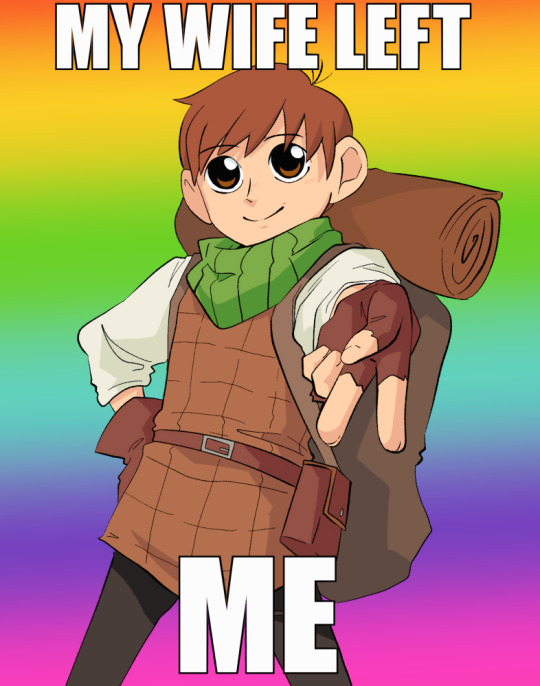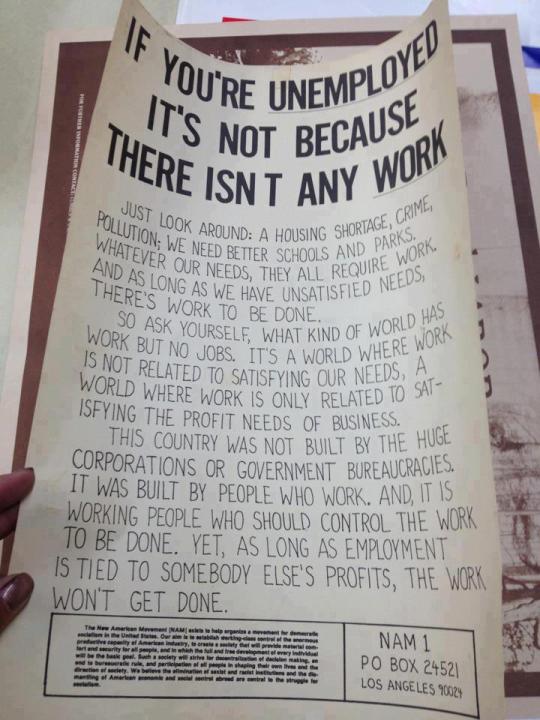Text
If you live in Chicago, go to the townhall meeting being held next saturday at the Logan Square Public Library to demand improvement in CTA service.

336 notes
·
View notes
Text
This is super cool! In one of my classes, another group did a project on replacing asphalt on campus with permable pavement similar to that used in LA and it's incredible how much of a difference it makes. I realise that removing excess asphalt is better in a lot of places, especially with the excess demanded for car dependant infrastructure like parking lots, but we will always need paved surfaces in our cities to make them accessible and this material offers an alternative to traditional pavement that is a lot more eco friendly!
As relentless rains pounded LA, the city’s “sponge” infrastructure helped gather 8.6 billion gallons of water—enough to sustain over 100,000 households for a year.
Earlier this month, the future fell on Los Angeles. A long band of moisture in the sky, known as an atmospheric river, dumped 9 inches of rain on the city over three days—over half of what the city typically gets in a year. It’s the kind of extreme rainfall that’ll get ever more extreme as the planet warms.
The city’s water managers, though, were ready and waiting. Like other urban areas around the world, in recent years LA has been transforming into a “sponge city,” replacing impermeable surfaces, like concrete, with permeable ones, like dirt and plants. It has also built out “spreading grounds,” where water accumulates and soaks into the earth.
With traditional dams and all that newfangled spongy infrastructure, between February 4 and 7 the metropolis captured 8.6 billion gallons of stormwater, enough to provide water to 106,000 households for a year. For the rainy season in total, LA has accumulated 14.7 billion gallons.
Long reliant on snowmelt and river water piped in from afar, LA is on a quest to produce as much water as it can locally. “There's going to be a lot more rain and a lot less snow, which is going to alter the way we capture snowmelt and the aqueduct water,” says Art Castro, manager of watershed management at the Los Angeles Department of Water and Power. “Dams and spreading grounds are the workhorses of local stormwater capture for either flood protection or water supply.”
Centuries of urban-planning dogma dictates using gutters, sewers, and other infrastructure to funnel rainwater out of a metropolis as quickly as possible to prevent flooding. Given the increasingly catastrophic urban flooding seen around the world, though, that clearly isn’t working anymore, so now planners are finding clever ways to capture stormwater, treating it as an asset instead of a liability. “The problem of urban hydrology is caused by a thousand small cuts,” says Michael Kiparsky, director of the Wheeler Water Institute at UC Berkeley. “No one driveway or roof in and of itself causes massive alteration of the hydrologic cycle. But combine millions of them in one area and it does. Maybe we can solve that problem with a thousand Band-Aids.”
Or in this case, sponges. The trick to making a city more absorbent is to add more gardens and other green spaces that allow water to percolate into underlying aquifers—porous subterranean materials that can hold water—which a city can then draw from in times of need. Engineers are also greening up medians and roadside areas to soak up the water that’d normally rush off streets, into sewers, and eventually out to sea...
To exploit all that free water falling from the sky, the LADWP has carved out big patches of brown in the concrete jungle. Stormwater is piped into these spreading grounds and accumulates in dirt basins. That allows it to slowly soak into the underlying aquifer, which acts as a sort of natural underground tank that can hold 28 billion gallons of water.
During a storm, the city is also gathering water in dams, some of which it diverts into the spreading grounds. “After the storm comes by, and it's a bright sunny day, you’ll still see water being released into a channel and diverted into the spreading grounds,” says Castro. That way, water moves from a reservoir where it’s exposed to sunlight and evaporation, into an aquifer where it’s banked safely underground.
On a smaller scale, LADWP has been experimenting with turning parks into mini spreading grounds, diverting stormwater there to soak into subterranean cisterns or chambers. It’s also deploying green spaces along roadways, which have the additional benefit of mitigating flooding in a neighborhood: The less concrete and the more dirt and plants, the more the built environment can soak up stormwater like the actual environment naturally does.
As an added benefit, deploying more of these green spaces, along with urban gardens, improves the mental health of residents. Plants here also “sweat,” cooling the area and beating back the urban heat island effect—the tendency for concrete to absorb solar energy and slowly release it at night. By reducing summer temperatures, you improve the physical health of residents. “The more trees, the more shade, the less heat island effect,” says Castro. “Sometimes when it’s 90 degrees in the middle of summer, it could get up to 110 underneath a bus stop.”
LA’s far from alone in going spongy. Pittsburgh is also deploying more rain gardens, and where they absolutely must have a hard surface—sidewalks, parking lots, etc.—they’re using special concrete bricks that allow water to seep through. And a growing number of municipalities are scrutinizing properties and charging owners fees if they have excessive impermeable surfaces like pavement, thus incentivizing the switch to permeable surfaces like plots of native plants or urban gardens for producing more food locally.
So the old way of stormwater management isn’t just increasingly dangerous and ineffective as the planet warms and storms get more intense—it stands in the way of a more beautiful, less sweltering, more sustainable urban landscape. LA, of all places, is showing the world there’s a better way.
-via Wired, February 19, 2024
#that was a fun class#my classmates project was super interesting as i discussed in the post#but I personally did a paper on the benefits of urban agriculture projects in places that would otherwise be food desertz#and also the social benefits of how those projects like community gardens can help people to bond
13K notes
·
View notes
Text
Where democracy in its classical form meant quite literally rule by the demos, by the plebes, by the people themselves, it now often seems to mean little more than elite rule sanctioned (through the device of representation) by the people. Competing elites vie for the support of a public, whose popular sovereignty is reduced to the pathetic right to participate in choosing the tyrant who will rule it.
Benjamin R. Barber
5 notes
·
View notes
Text

A cartoon from 1914 that could have been written today
30K notes
·
View notes
Text
hi I'm from your pseudo-medieval fantasy city. yeah. you forgot to put farms around us. we have very impressive walls and stuff but everyone here is starving. the hero showed up here as part of his quest and we killed and ate him
30K notes
·
View notes
Text
cars r so dangerous we need like an anti-car ad campaign like they do for drugs n cigs. we need to get these cars off the street
20K notes
·
View notes
Text
i think there should be a series of cars who drive the same route all day and you can hop on and ride to your destination. also maybe the cars should be on a separate road too. and the road would be a track which guides them on their beautiful route. wouldnt it be wonderful. i love cars
6K notes
·
View notes
Text
hi I'm from your pseudo-medieval fantasy city. yeah. you forgot to put farms around us. we have very impressive walls and stuff but everyone here is starving. the hero showed up here as part of his quest and we killed and ate him
30K notes
·
View notes
Text
If You’re Gonna Make Something Wheelchair Accessible, Don’t Make it a Thing
Here’s some examples awkward accessibility being a thing:
Your at a hotel that has a lift to get you from one sub-floor to another, but the lift can only be unlocked and operated by one specific person that the hotel now has to go find. Sure, they’ve made the entrance to the sub-floor is accessible, but now it’s a thing.
The buses are wheelchair accessible but the driver has to stop the bus, take 30 seconds to lower the goddamn ramp, move passengers out of their seats, hook up the straps and then secure you in the bus. Sure, they’ve made the busses accessible but now it’s a thing.
The restaurant has an accessible entrance, but it’s past the trash room and through the kitchen. Sure, the restaurant is accessible, but now it’s an insulting thing.
Here’s some great examples of accessibility not being a thing:
The train to the airport pulls up flush with the platform. I board with everyone else and sit wherever the fuck I want. Riding the train is accessible and not a thing.
In Portland, I press a button the side of the streetcar and a ramp automatically extends at the same time the door opens. I board in the same amount of time as everyone else. This is not a thing.
I get that it is difficult to design for wheelchair accessibility, but folks need to start considering the overall quality of the experience versus just thinking about meeting the minimum requirements.
121K notes
·
View notes
Photo

Slime mold was grown on an agar gel plate shaped like America and food sources were placed where America’s large cities are.
The result? A possible look at how to best build public transportation.
I just really like the idea of slime mold on a map of the US. It’s beautiful.
215K notes
·
View notes
Text

VERGE OF THE WIDER SEA -
My Paleolithic character Nisse at the edge of the western ocean.
[old art]
3K notes
·
View notes
Text
so my apartment building got a notice board to post fire alarm tests and maintenance announcements and such. the building is pretty well-maintained, so we rarely get notices. the board is big and grey and to think it would be empty like that 99% of the time was a bland boring sin i just couldn't bear, so i vandalized the corner of its empty canvas with a teeny tiny Guy

and within a few days, there was a sudden addition from my one of my neighbors along with a Bunch of thumbtacks. this was an unexpected, but welcome surprise!
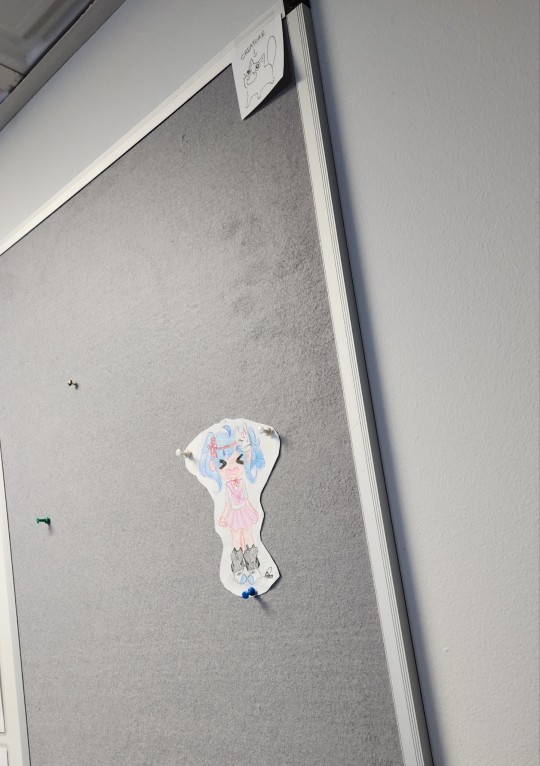

well there was still so much space, i figured i'd add another crumb to the art hoard. i'd been playing genshin that day so i drew my favorite grandpa

and like clockwork, new art manifested!! this person is gonna grow to be a great artist i know it. the detail in those stones? hell yeah that's cool.
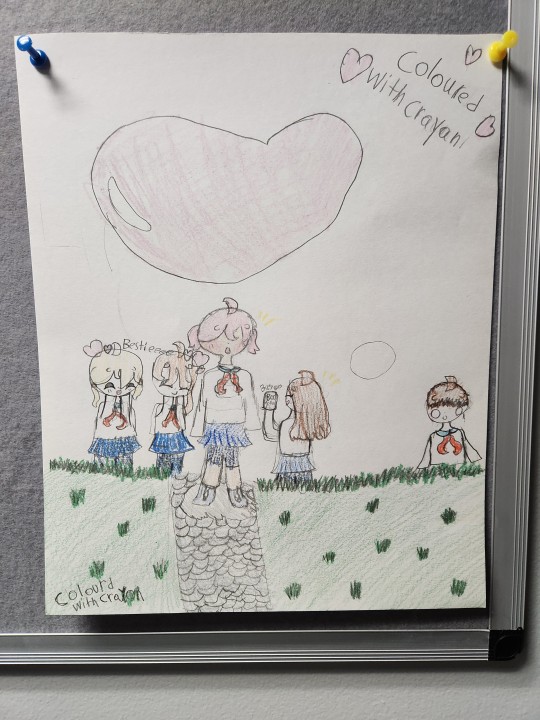
we're two weeks into it. more neighbors have joined in with their artwork. who knew there were so many artists in my building?? we're onto somethin great here i just know it.

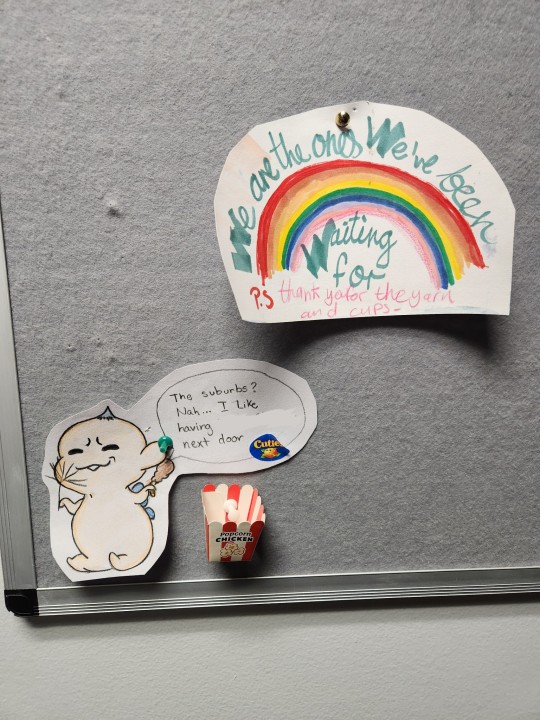
136K notes
·
View notes
Note
Aside from your urbanism book in your blog description, what are some of your favorite authors?
I'm currently reading through murray bookchin's bibliography so recommend him. As well, Jane Jacob's The Life and Death of Great American cities is a classic, though I probably wouldn't consider her a favourite cause I have some beef with The Economy of Cities.
As well, I enjoy Petr Kropotkin's writings as they're the basis of modern anarchism. I'll also recommend Engin Isin's cities without citizens as an excellent look at Canadian cities, though I've not read his other works. Another author who I can only speak to a singular book of is Andy Merrifield and his work Metromarxism.
Outside urbanism and political theory though, I love Ray Bradbury. I have a complete collection of his short stories which I think are criminally underappreciated compared to Fahrenheit 451.
2 notes
·
View notes
Text
Urbanists when it's time to complain about a city

690 notes
·
View notes
